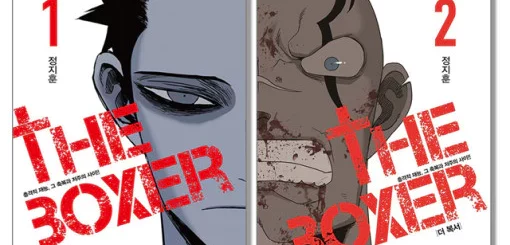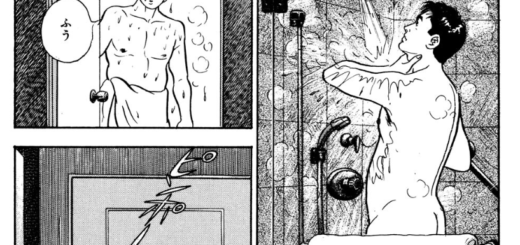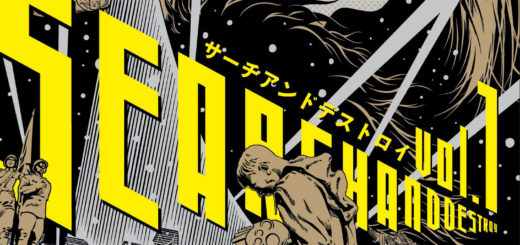Ep. 100: Okinawa by Susumu Higa – Interview with Jocelyne Allen and Andrew Woodrow-Butcher
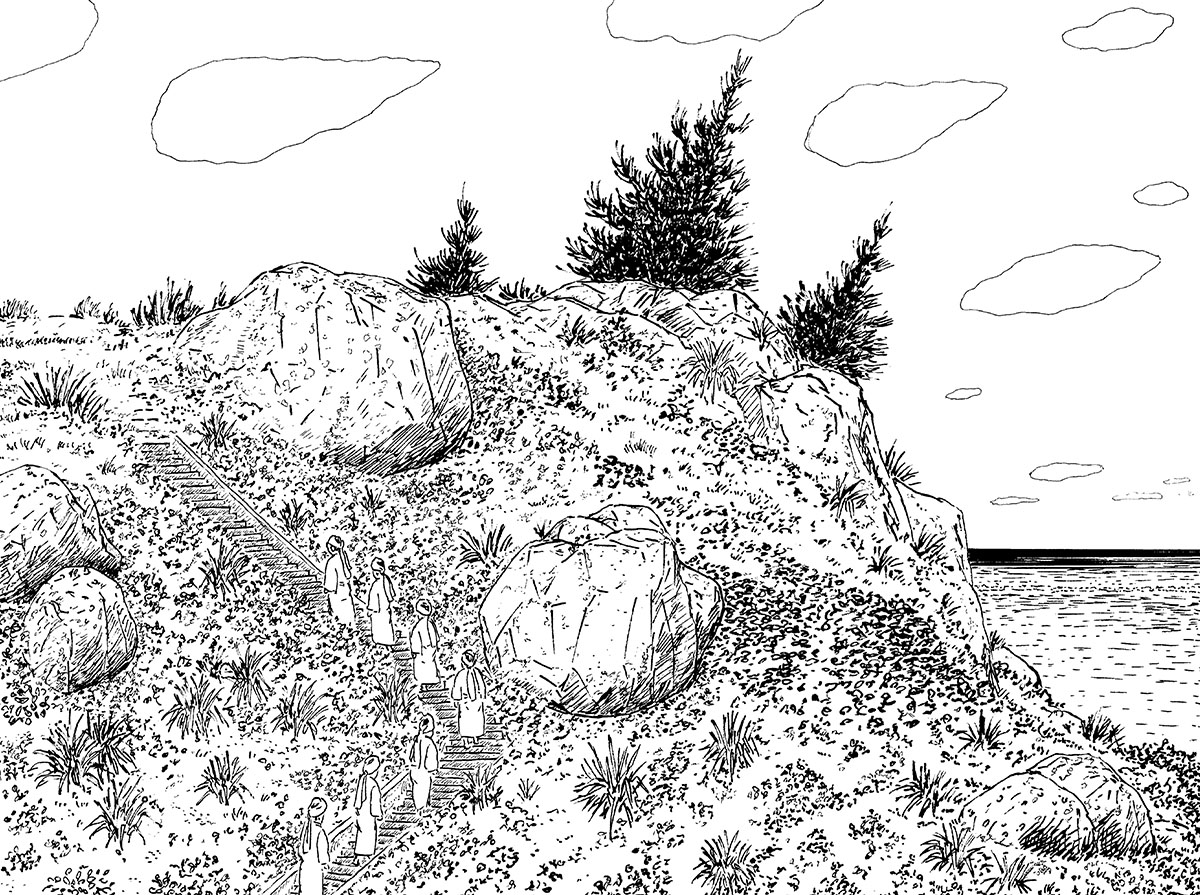
It’s the 100th episode, and the team are doing something special! This week David and Chip take over, interviewing translator Jocelyne Allen and Editor Andrew Woodrow-Butcher on the new manga Okinawa, by Susumu Higa! Produced by MSX: Mangasplaining Extra and published by Fantagraphics, this gripping historical manga is now available everywhere, and you can go behind the scenes of its creation on this very special episode!
Powered by RedCircle
Listen and Subscribe to the Podcast:
Google | Apple | Stitcher | RedCircle | Amazon | Radio Public | PocketCast | Spotify
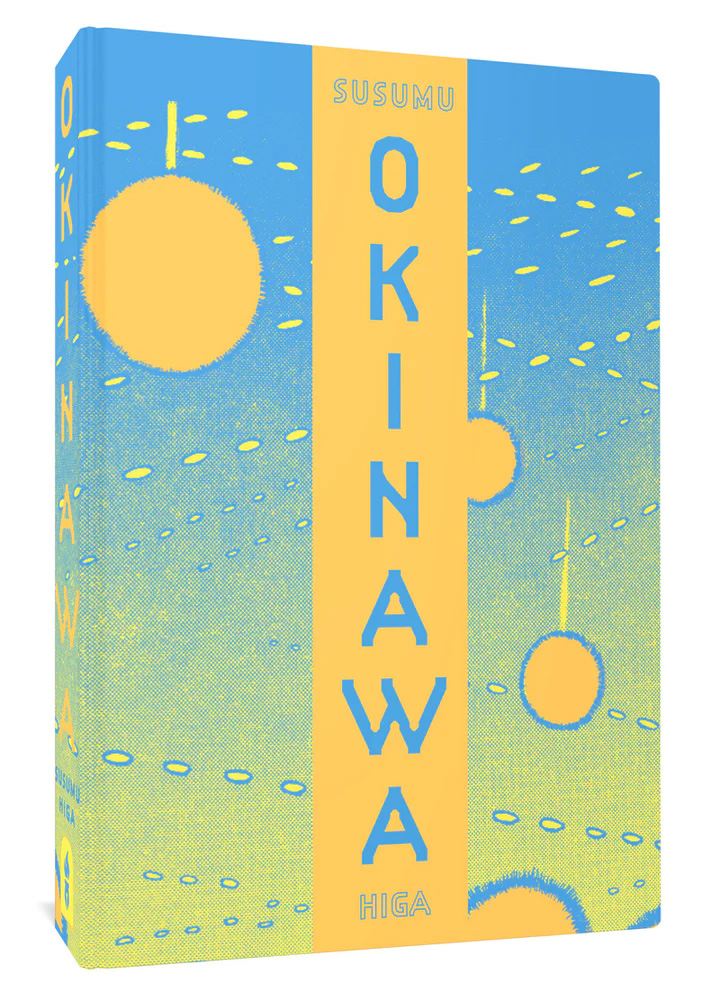
Okinawa
By Susumu Higa
Translated by Jocelyne Allen
Edited by Andrew Woodrow-Butcher, Christopher Woodrow-Butcher, and Eric Reynolds
Lettered by Patrick Crotty
Designed by Kayla E
Published by Fantagraphics (Print/Digital) and MSX
Audio editing by David Brothers. Show notes by Christopher Woodrow-Butcher & Deb Aoki
Before We Get Started
Hi, it’s Christopher. So, funny story. This is the first manga that we’ve (co-)published to be included on the podcast, Okinawa by Susumu Higa. It was originally serialized on Mangasplaining Extra, our publishing endeavour via Substack Newsletter (thanks, Substack!).
I felt a bit… conflicted about covering it, thinking we might just do a bonus segment about it at the end of another episode, but thankfully, David and Chip wanted to celebrate it right and do a whole episode, and so I bowed out (as did Deb) and David and Chip interviewed the book’s translator, Jocelyne Allen (who has been on the podcast before) along with my husband and the book’s editor Andrew Woodrow-Butcher, and I’m really happy with the results… Despite the fact that they rip on me pretty hard this episode. Friends, eh?
Anyway, since this episode is already hopeless compromised, please feel free to buy this book. Direct appeal, how about that? Seriously though it’s doing pretty well, with great reviews. It’s now available in all kinds of places like these!

Buy Okinawa now:
Fantagraphics | The Beguiling | Amazon | Barnes and Noble | Waterstones
Thanks for listening to the podcast, reading these notes, subscribing to the newsletter, and checking out our published(!) manga(!!). Life is wild. I’m truly grateful. On with the show.
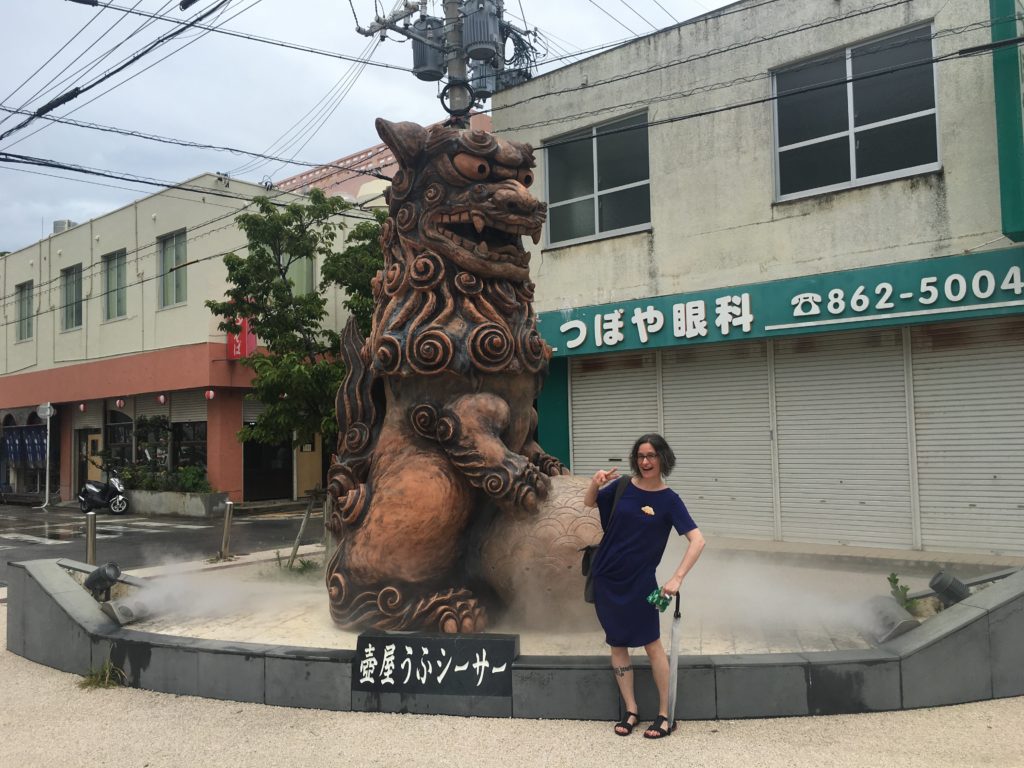
About Jocelyne Allen
Jocelyne Allen is a translator and interpreter working with Japanese novels, manga, pop culture materials and more. Her professional website can be found at http://www.kaikatsu.ca/. She also writes a LOT about manga, and you can find her thoughts on the medium on her website http://www.brainvsbook.com/.
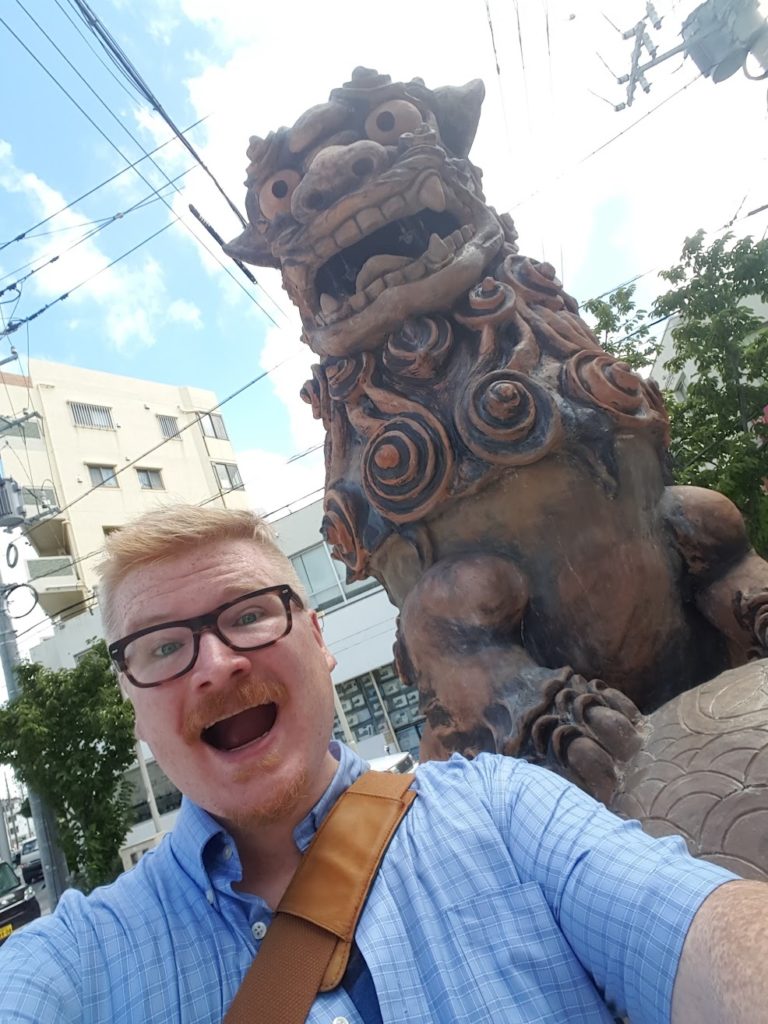
About Andrew Woodrow-Butcher
Andrew Woodrow-Butcher is an editor, critic, and consultant with a career specializing in comics in school and public libraries. Andrew manages graphic collection development services for renowned comics shop The Beguiling Books & Art, where he also built their spin-off shop Little Island Comics, which was, at the time, the world’s only comic book shop just for kids. His work for the Toronto Comic Arts Festival spanned a decade and focused on programming for kids and educators, and on building international comics partnerships. He is currently consulting for manga publisher Kodansha. He has written about a wide variety of books for venues like Xtra!, Broken Pencil, Quill & Quire, CBC Kids, and Publishers Weekly.
00:50 🙁
01:45 Here’s how Fantagraphics describes Okinawa:
This heartbreaking manga, by an award-winning cartoonist, examines the history of Okinawa and its military occupation. An essential manga classic presented in English for the first time.
Fantagraphics Books
A Junior Library Guild Gold Standard Selection
A peaceful, independent kingdom until its annexation by the Japanese Empire in the 19th century, Okinawa was the site of the most destructive land battle of the Pacific War. Today, the archipelago is Japan’s poorest prefecture and unwilling host to 75% of all US military bases in Japan.
Okinawa brings together two collections of intertwined stories by the island’s pre-eminent mangaka, Susumu Higa, which reflect on this difficult history and pull together traditional Okinawan spirituality, the modern-day realities of the continuing US military occupation, and the senselessness of the War. The first collection, Sword of Sand, is a ground level, unflinching look at the horrors of the Battle of Okinawa. Higa then turns an observant eye to the present-day in Mabui (Okinawan for “spirit”), where he explores how the American occupation has irreversibly changed the island prefecture, through the lens of the archipelago’s indigenous spirituality and the central character of the yuta priestess.
Okinawa is a harrowing document of war, but it is also a work which addresses the dreams and the needs of a people as they go forward into an uncertain future, making it essential reading for anyone interested in World War II and its effects on our lives today, as well as anyone with an interest in the people and culture of this fascinating, complicated place. Though the work is thoroughly about one specific locale, the complex relations between Okinawan and Japanese identities and loyalties, between place and history, and between humanity and violence speak beyond borders and across shores.
It’s so weird to paste in descriptive text from the publisher and realize that I helped write that text (working with Publisher Eric Reynolds and the folks at Fantagraphics, of course). First time for everything!
Also, as it comes up right in the beginning here, Andrew actually wrote an article about how three Canadians came to be the driving force behind getting Okinawa into English. You can read it at Quill and Quire.
In addition to what’s in the article though, where Jocelyne and Andrew were absolute stars and it wouldn’t have happened without them, I want to take a moment to thank agent Mitsuhiro Asakawa for putting us in touch with Higa-san, for helping us get our hands on the digital files that comprised the book, and his early help in communication around contract issues. We greatly appreciate his support.
I also want to thank Aki Yanagi for his efforts around contracting and finalizing the agreements, and for corresponding with Higa-san during the MSX period of putting the book together.
And don’t worry, we’ve got more thanks to give throughout the article as we go.
03:50 The French editions were actually a huge part of starting work on this. Jocelyne talks about it later, but Peter Birkemoe of The Beguiling in Toronto and I were spending a lot of time in Japan around 2010-2012 when Serinkogeisha Publishing re-released Sword of Sands and released Mabui for the first time. Getting Jocelyne to read these books was part of pitching it to publishers, but it wasn’t until Lézard Noir released the French editions of these books that Andrew and I got to read and really appreciate them for the first time. It was at the urging of Stephane Beaujean, who managed the Paris comic book store Aaapoum Bapoum (which stocked deeply on these books) that we embarked on trying to make an English edition happen. This acted as the kick in the pants that we needed.
So thanks to Stephane at Lézard Noir, Stephane Beaujean of the great comic store Aapoum Baapoum, and Peter Birkemoe of The Beguiling, for providing some great inspiration.
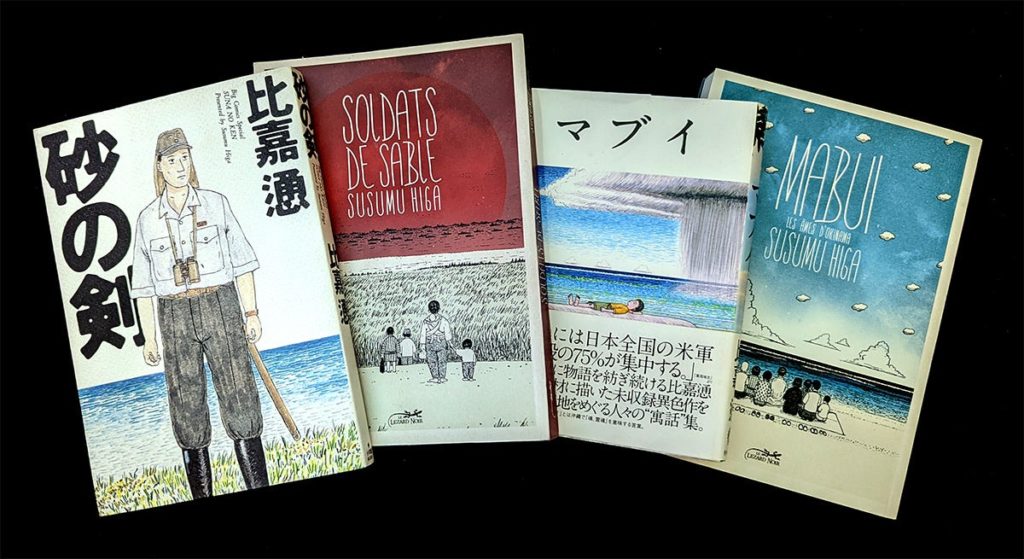
06:45 Here Andrew is secretly talking about the current process for one of our upcoming titles, Veil, by Kotteri. It’ll be releasing in 2024 from UDON Entertainment. It’s another title that arrived in French before it arrived in English, so there was a French edition to reference during translation. If you’re wondering, the first volume of the English edition of Veil is already translated and lettered, with the translation and lettering of the second volume starting soon. It’s going really well and looks beautiful!
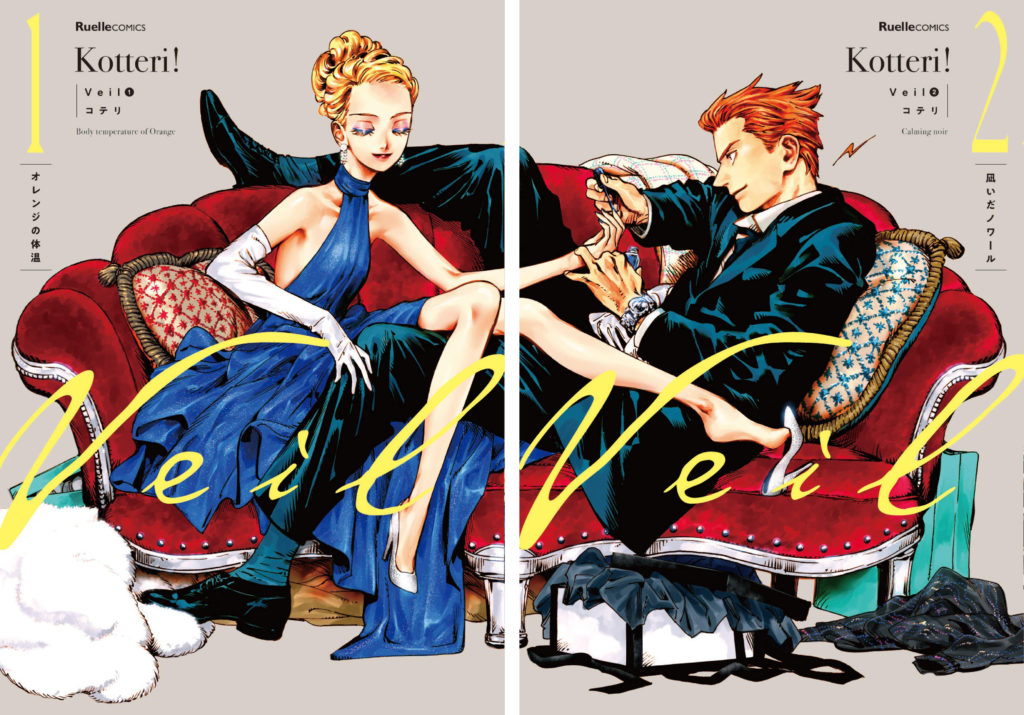
07:50 It’s true! We covered Rose of Versailles earlier this season. Check it out.
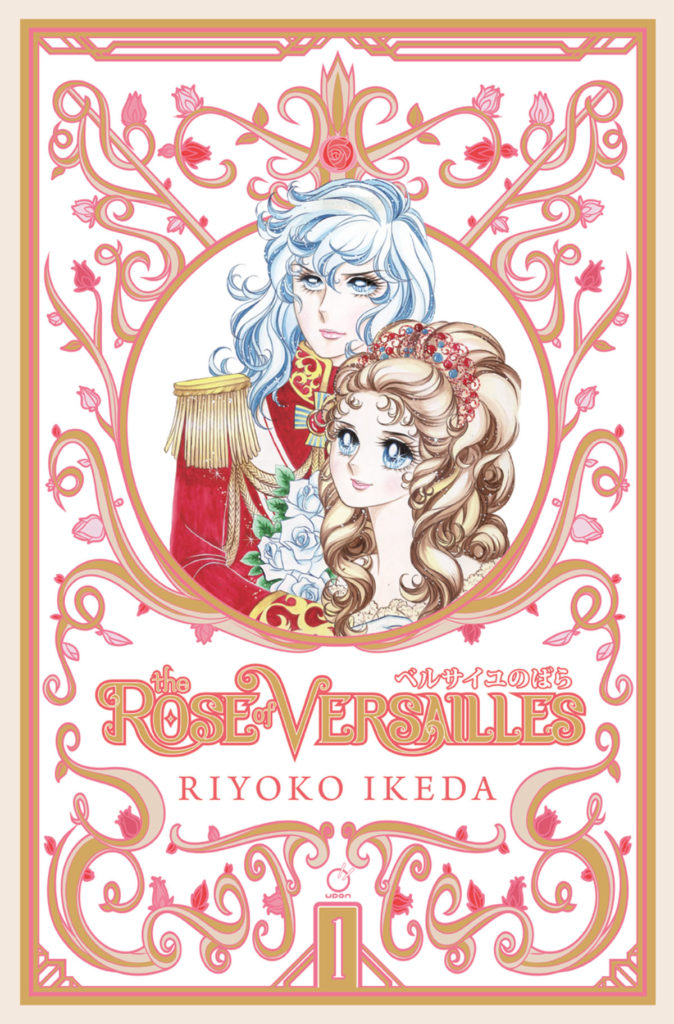
09:50 It’s also true, Karate Kid II starring Pat Morita and Ralph Machio is set in Okinawa, Japan. I haven’t watched it in forever and can’t remember how accurate the cultural rep is… But that’s probably where I first learned about Okinawa, too.
12:00:
MANGASPLAINING EXTRA (MSX): When the stories that appear in Okinawa were first published in Japanese, what was the reaction? Was there anything surprising or unexpected about the responses you received from readers?
Susumu HIGA: There was surprisingly little reaction.
From the interview with Susumu Higa in Okinawa
17:40 The military base protest chapter they’re describing is chapter 12, “Military Employee,” which is about an Okinawan woman working on a US Military Base who is tasked with responding to Okinawan protestors on behalf of the U.S. Military. It’s a good one! Here’s the first few pages.
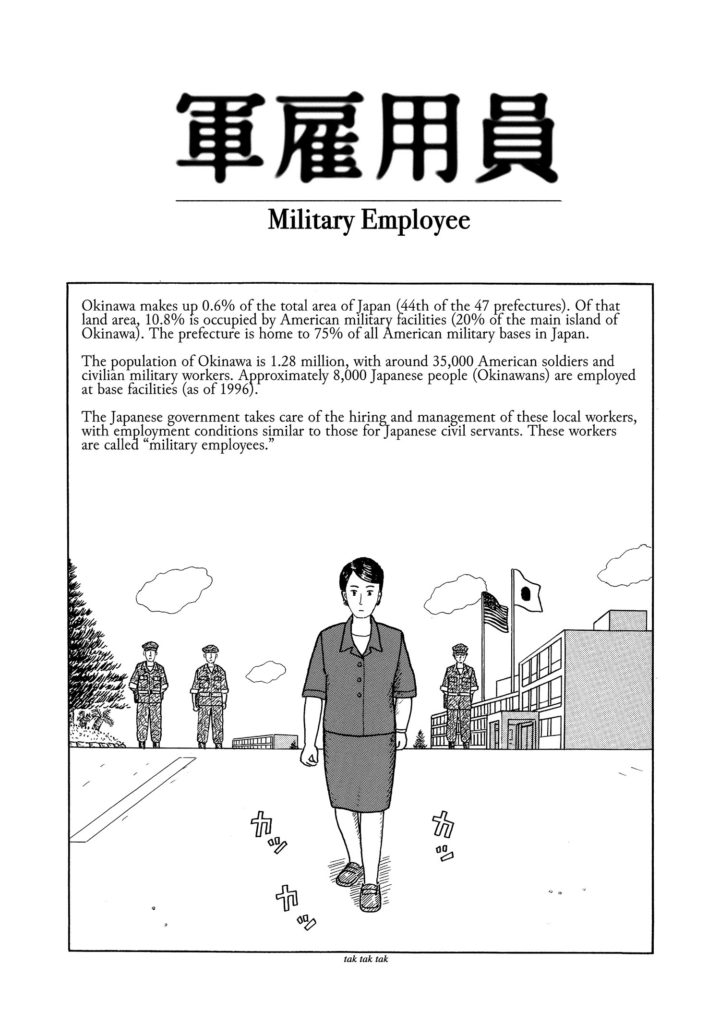
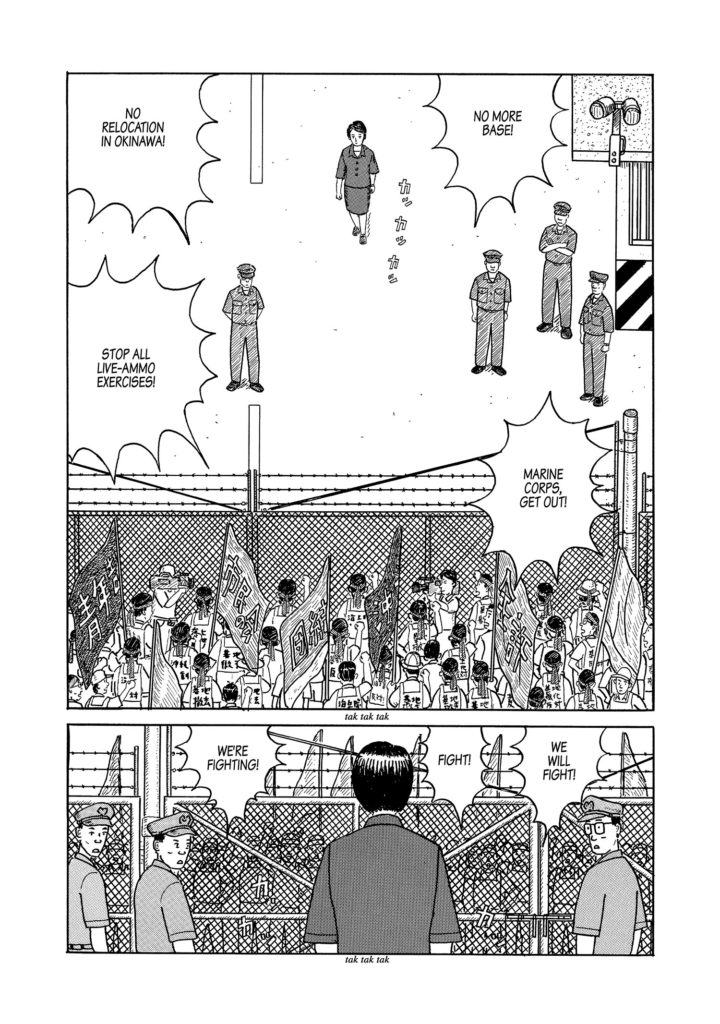
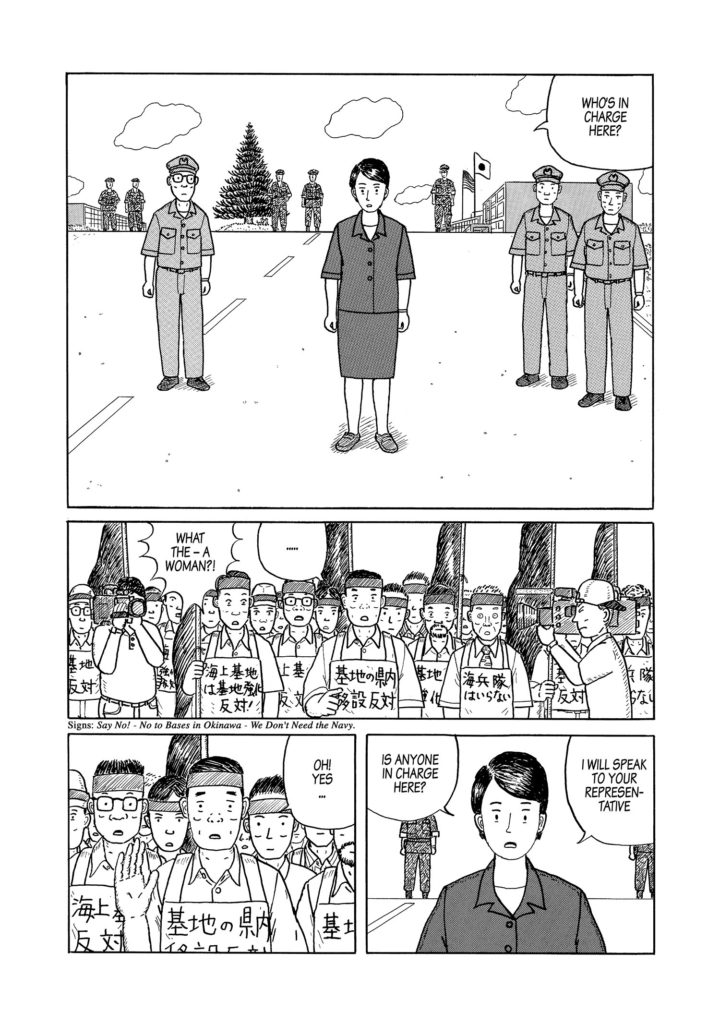
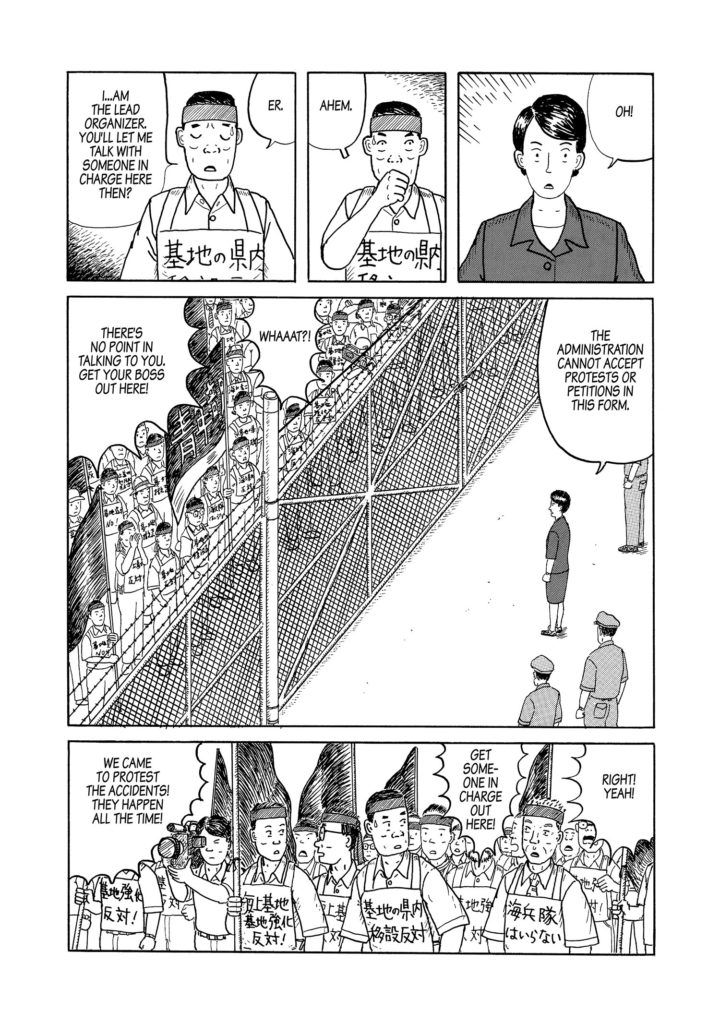
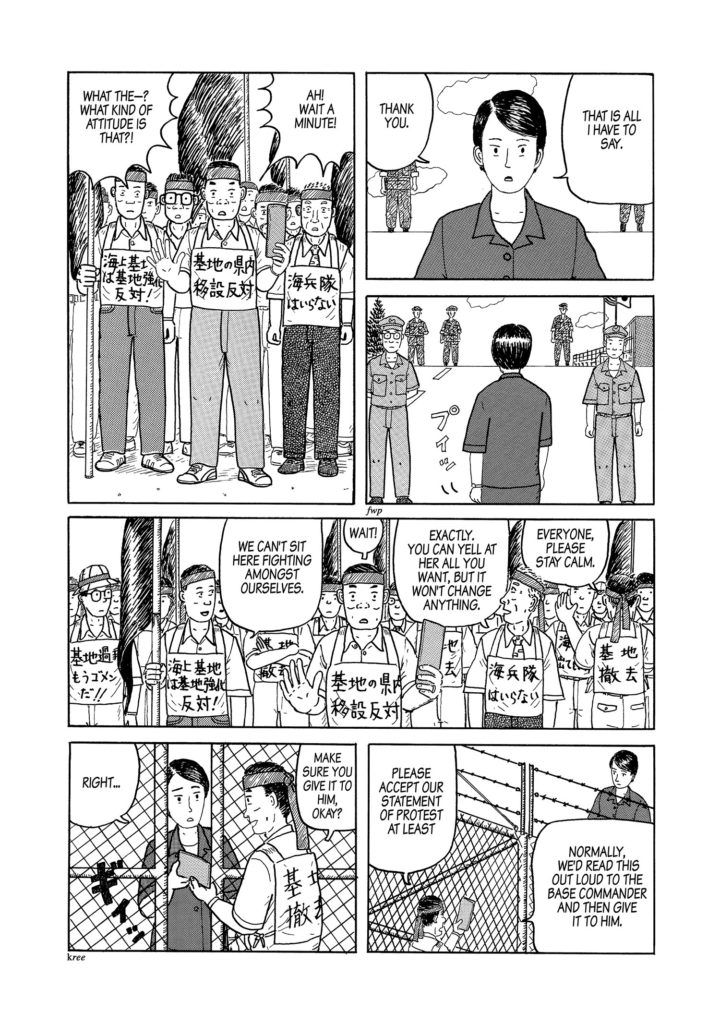
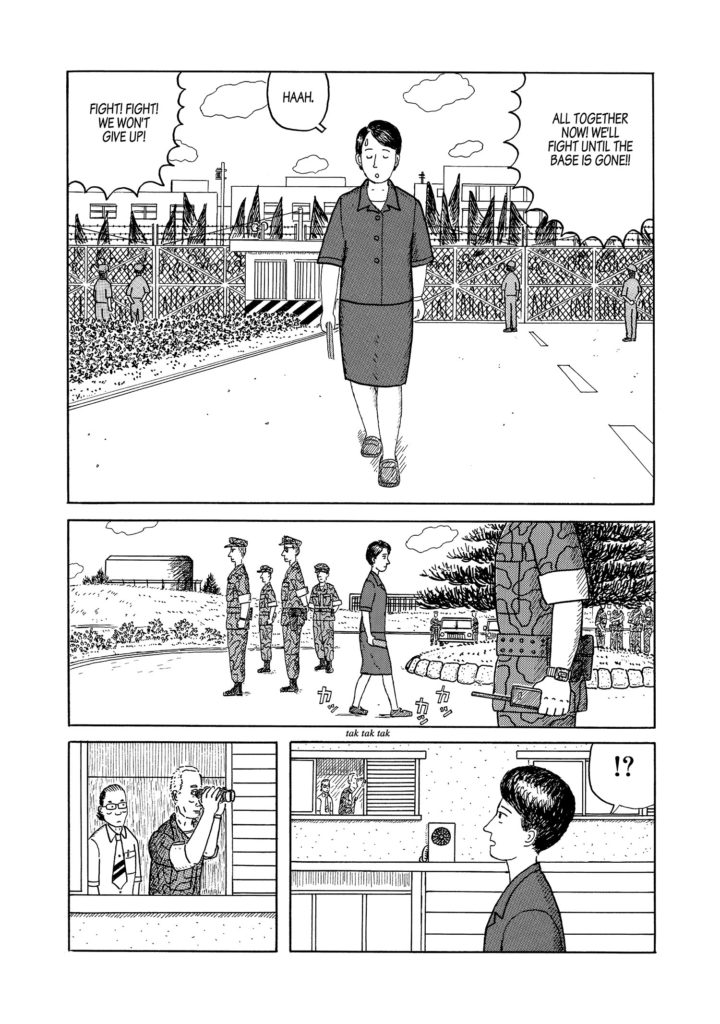
18:15 So here’s one of the really interesting things that you learn when you’re working on the book that you didn’t know before you started the project: These stories were all completed in the same time period, between 1992 and 2000. The stories that comprise Sword of Sand were the ones that were first created by Higa, and then published in Shogakukan’s Big Comics Original magazine.
The stories that comprise Mabui were the stories that were published in various Shogakukan magazines but were not collected into graphic novel format at the time, with the exception of the short story that’s also called “Mabui,” which was illustrated but not published when it was originally drawn. When Serinkogeisha picked up the rights to Sword of Sand after the Shogakukan edition went out of print, they decided to do a companion volume of the unpublished stories set closer to present day with Mabui, containing the uncollected and unpublished stories.
It turns out the Japanese edition of Mabui includes a list of the stories and where they appeared. This is something that we didn’t discover until we were putting together the book version (same thing with the afterword to Sword of Sand that was only included in the first printing!). Higa talks to us about it a little in the interview published in the book (and on MSX as well). It was confusing at the time because the unpublished story, and the collection of stories not published in tankoubon were BOTH called “Mabui.”
Anyway, apparently my initial thought to combine these stories into one book was maybe a good idea, because it turns out they were all of a piece. That said, some of what I wrote in the early serializations on MSX may not be entirely correct, but the printed book is accurate, thankfully.
20:50 As mentioned, Higa-san took us on a walking tour of Naha, to show us some important sites. Some of the photos and information from that tour made it into the serialization and the published book, but most didn’t. So here’s a little bit for you here:
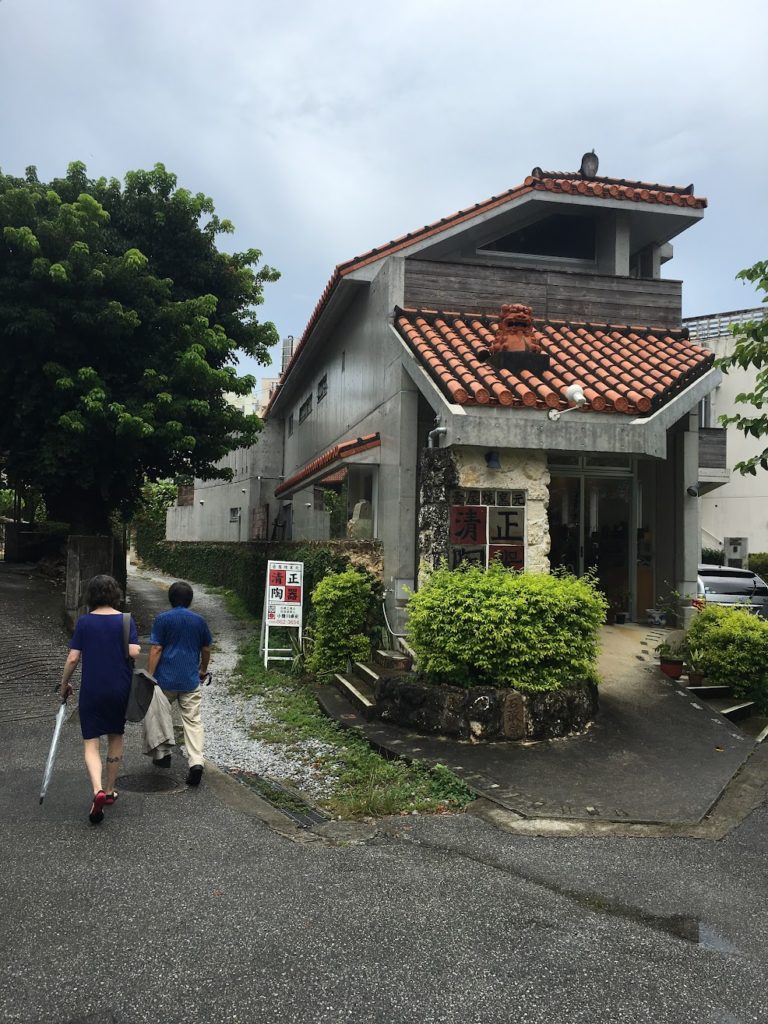
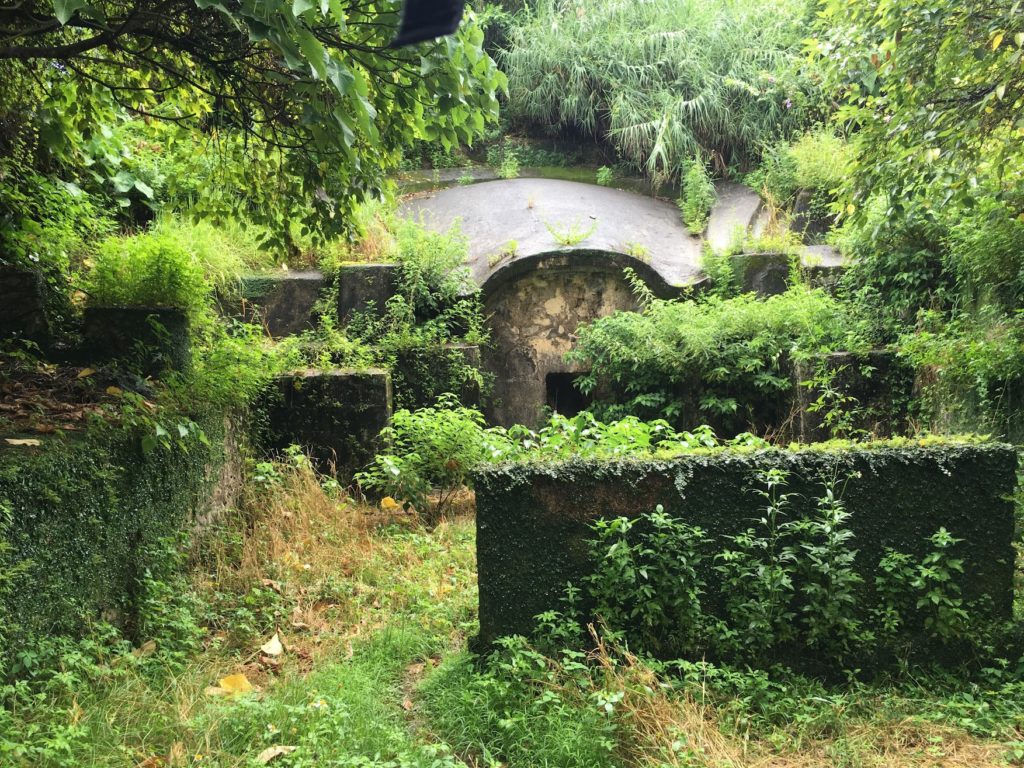
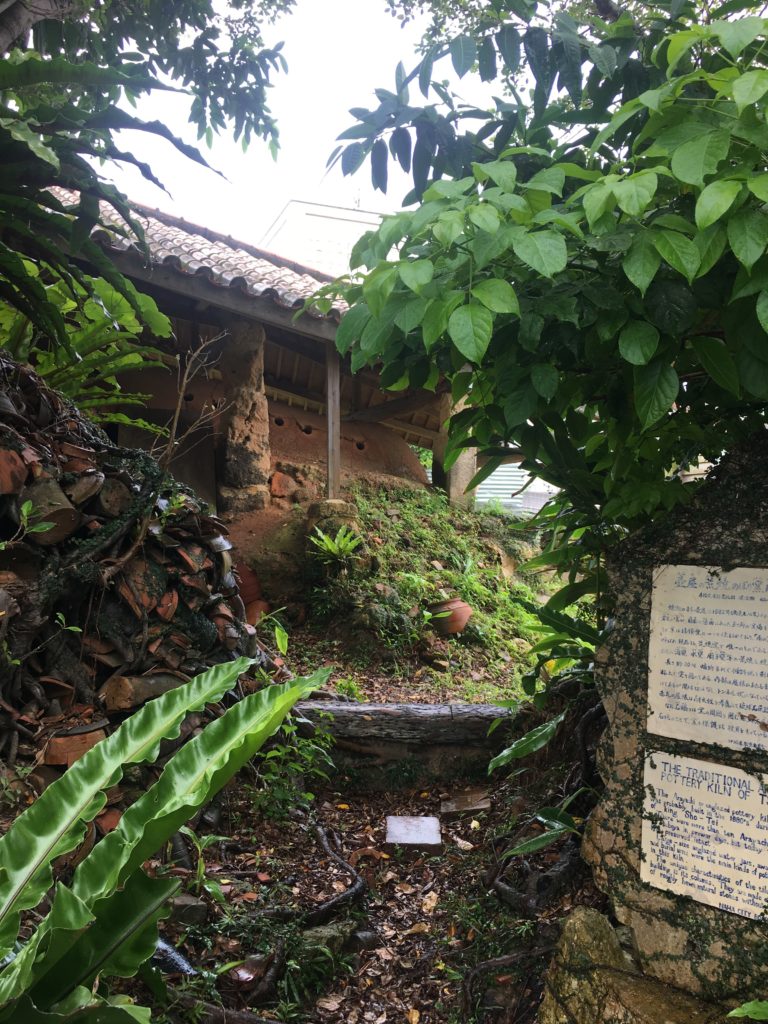
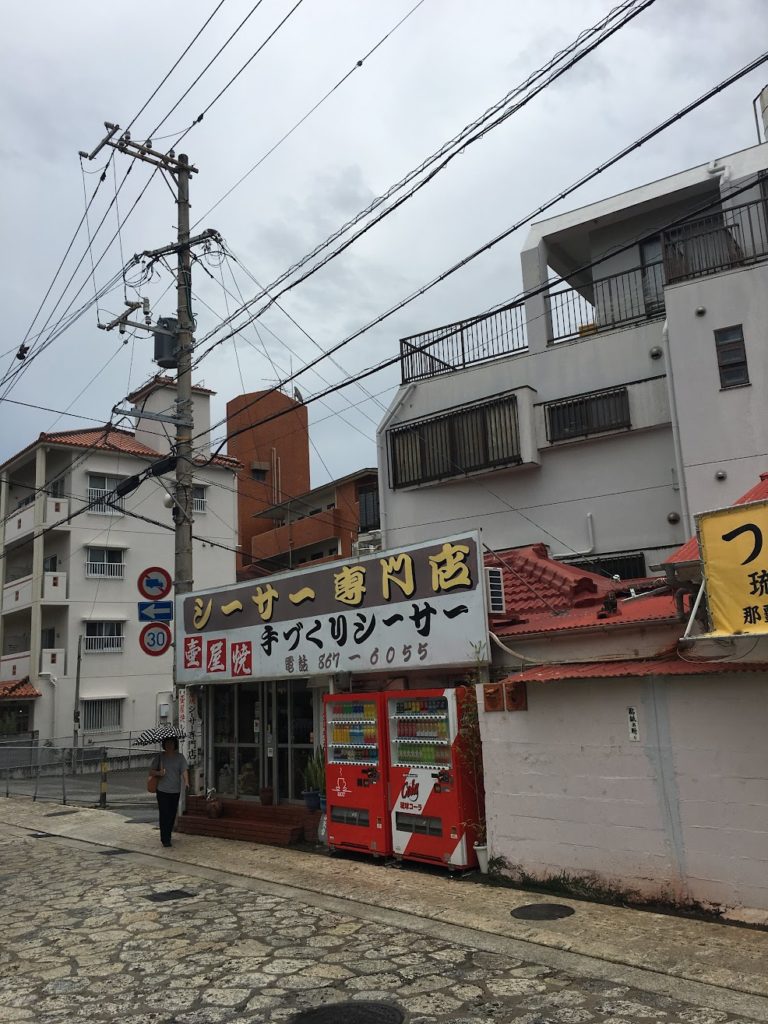
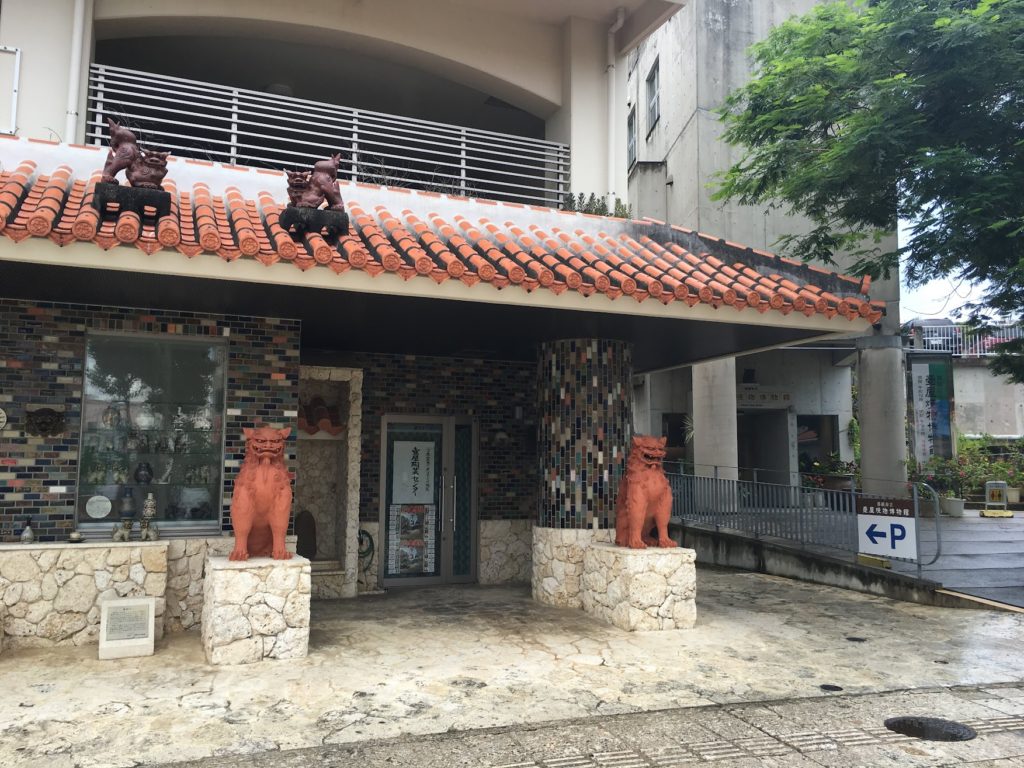
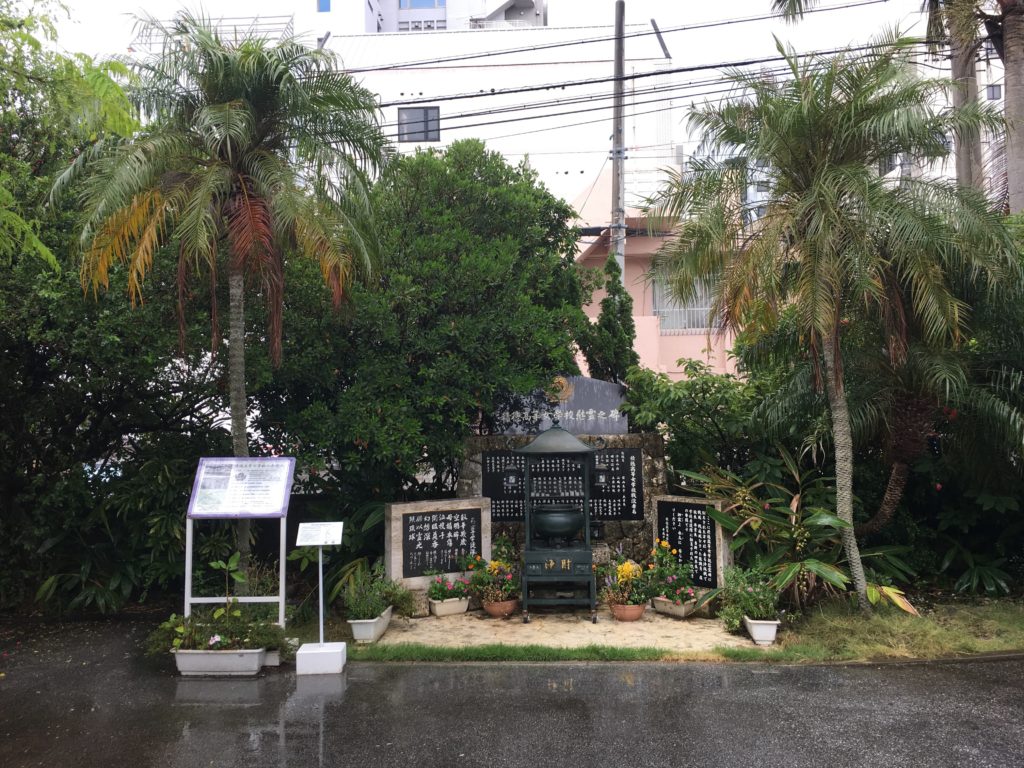
On a slightly lighter note, Okinawan fried donuts are called sata andagi, and Japanese cooking website Just One Cook Book has a recipe.
[DEB:] My grandparents on my mom’s side immigrated to Hawaii from Okinawa, and one of my favorite memories of my grandma is how she could make perfectly round andagi just by putting batter in her hand, squeezing out just the right amount, then flicking her wrist just so to make a round ball when it landed in the hot oil. I have never been able to replicate her technique.
A lot of Okinawans emigrated to Hawaii to work in the sugar cane and pineapple fields. As a result, there’s a strong Okinawan cultural identity in Hawaii, including the Hawaii Okinawa Center and a yearly Okinawan Festival where andagi and spam musubi are popular treats.
24:20 Here’s a photo of Higa-san in his garden on the day we interviewed him, it was a lovely cool late-spring day.
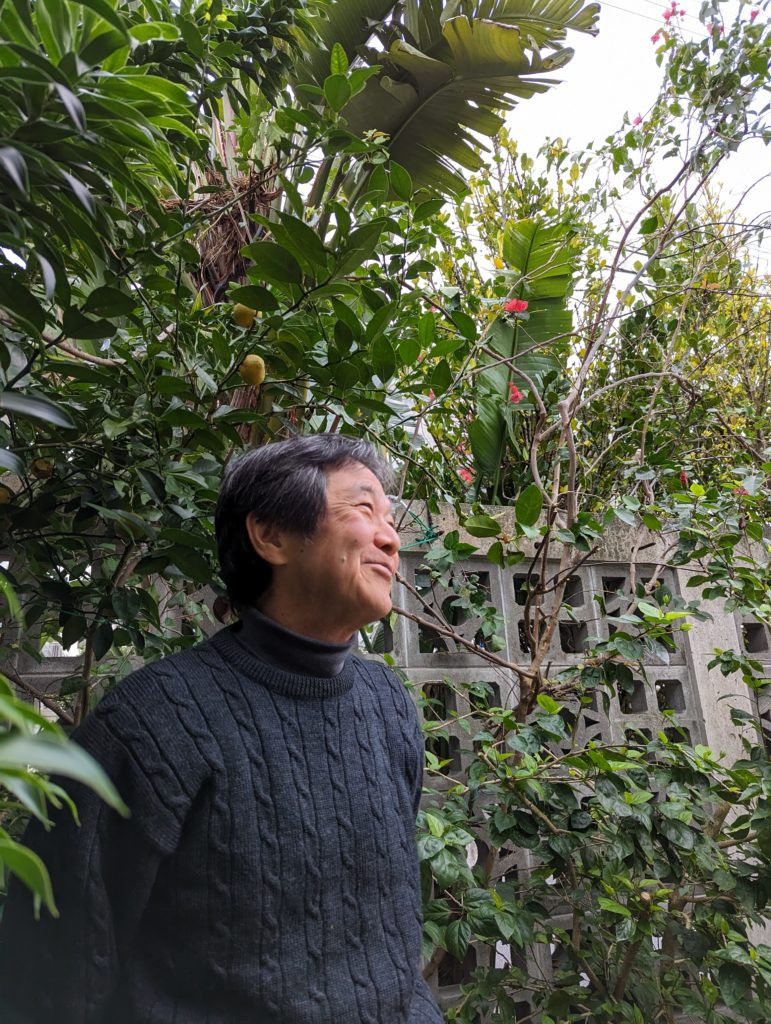
26:23 Are you religious? There was more here, some back and forth, in the original interview. It’s been condensed and edited a little, but it’s still a great passage from the interview.
HIGA: Oh really? Are any of you religious?
MSX: It’s difficult to say.
HIGA: I think that’s what it should be. There’s nothing you’re forced to do. Just at New Year’s or whatever, your family comes over and says “hi” to your ancestors. It’s completely different from those religions where they take everything you have.
MSX: Honestly, we’re just trying to be respectful. If we’re in Japan and go to a shrine, we participate how everyone else does. If we’re here for New Year’s, we go and say our ‘hatsumode’ (first prayer of the new year). But it’s different depending on the religion in the West; it can be more fraught to participate.
HIGA: In that sense, in Okinawa, maybe you can’t say it’s a religion at all? When I was writing in Mabui about ugan and the yuta, things like that.
From the book Okinawa
Here’s an example of how people talk about religion in the Maubi section of Okinawa, about how they are (or aren’t) religious.
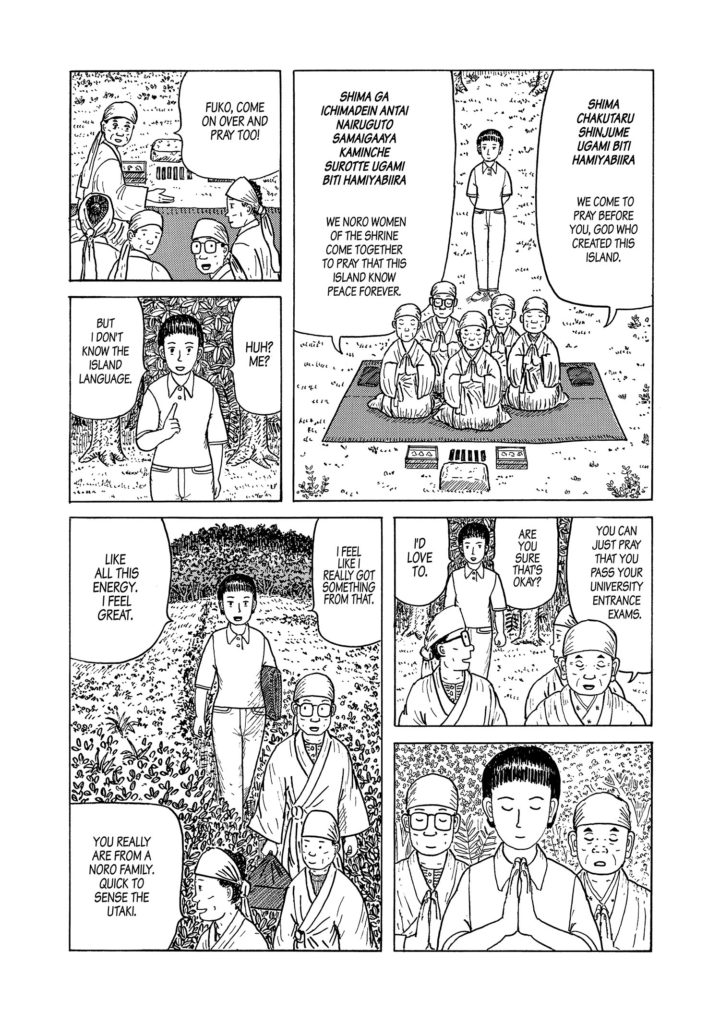
34:45 I was part of the discussion around sound effects there, and honestly, I just didn’t think we could do his sound effects justice. His sound effects are so intense, and I’d always rather have the author’s hand on the page whenever possible than an interpretation. Like this, for example, is just so powerful:
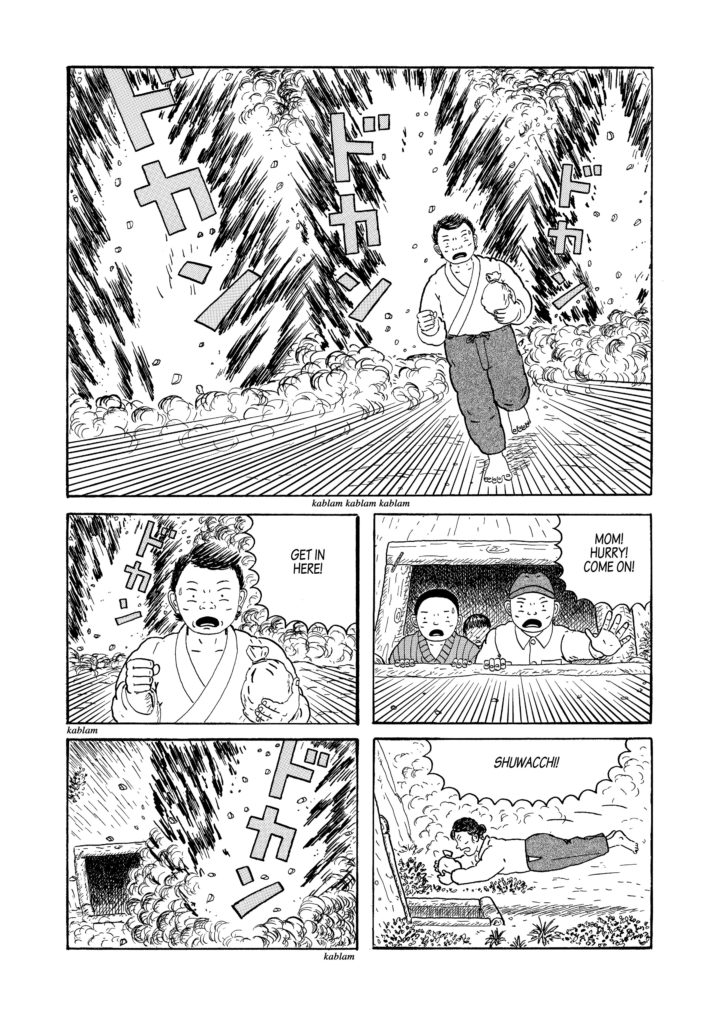
Speaking of which, the page above has the sound effect that David mentions at 38:30, “Shuwacchi!”
Interestingly, it’s actually written as her shouting exactly that in the Japanese, which would imply that it is an Okinawan expression?
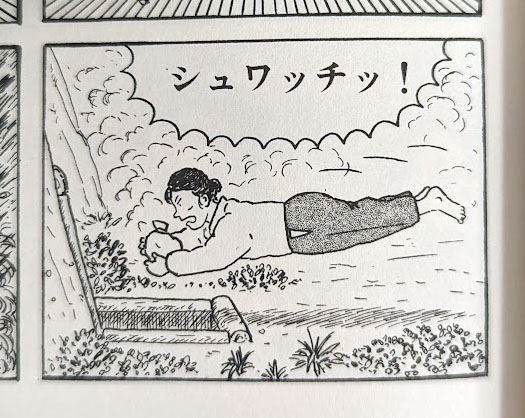
Maybe Jocelyne will pop up in the comments with a thought? Maybe it’s where the Ultraman noise came from…? Maybe we’ll have to ask Higa-san.
44:00 So yeah, the pointy brackets were interesting, and a good “American” solution to depicting the Americans. On that note, here’s a comparison between a Japanese panel and an English panel so you can see the original and what we did.
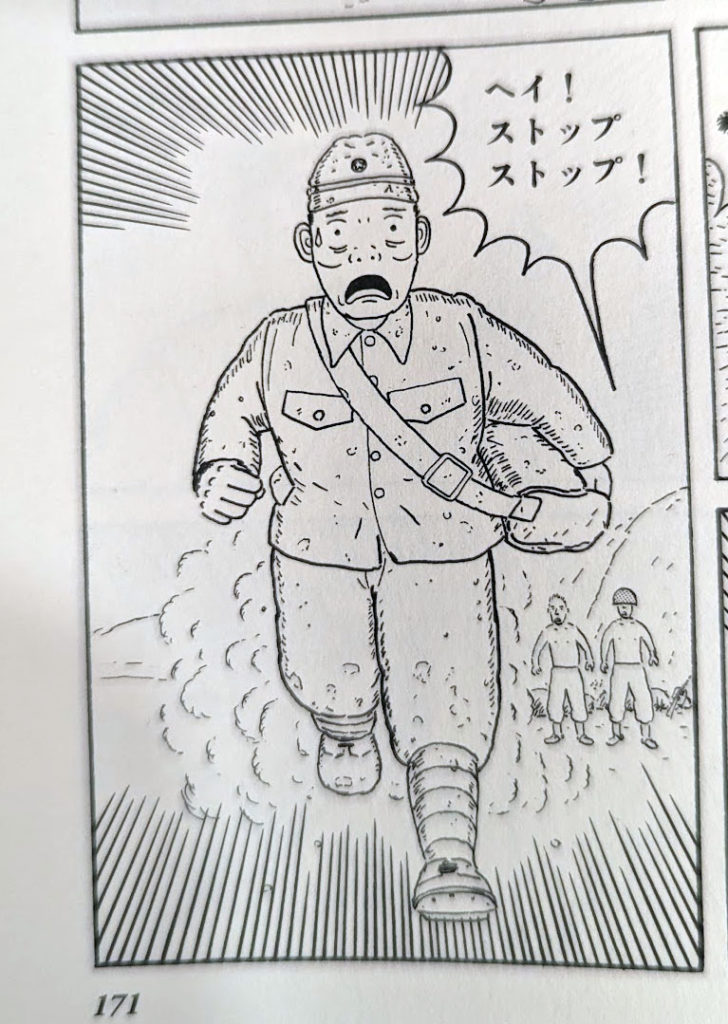
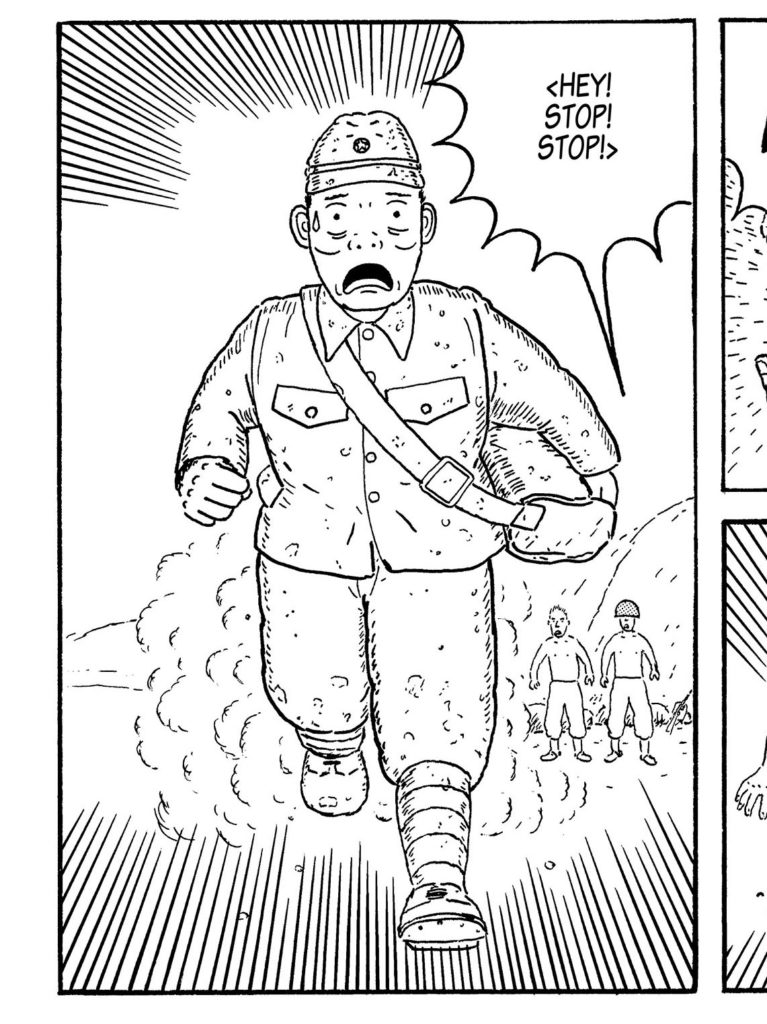
45:00 You can find Chip Zdarsky’s Public Domain serialized over on his Substack! It’s also available in print in issue and trade paperback format from Image Comics.
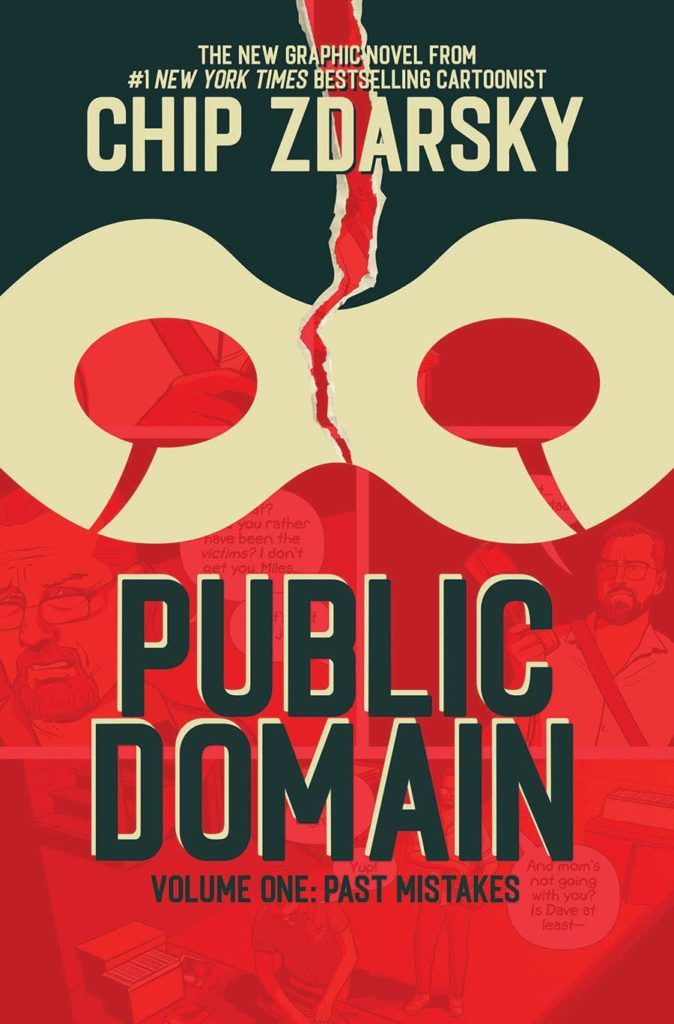
While I can’t pull up the double-lined-word-balloon-to-denote-foreign-languages from Public Domain (sorry, it’s late here), I can show you the pages that Chip is referencing from Taiyo Matsumoto’s Ping Pong. Here, the character “China” is speaking Mandarin to his trainer, but his trainer is speaking Japanese to his Japanese coach.
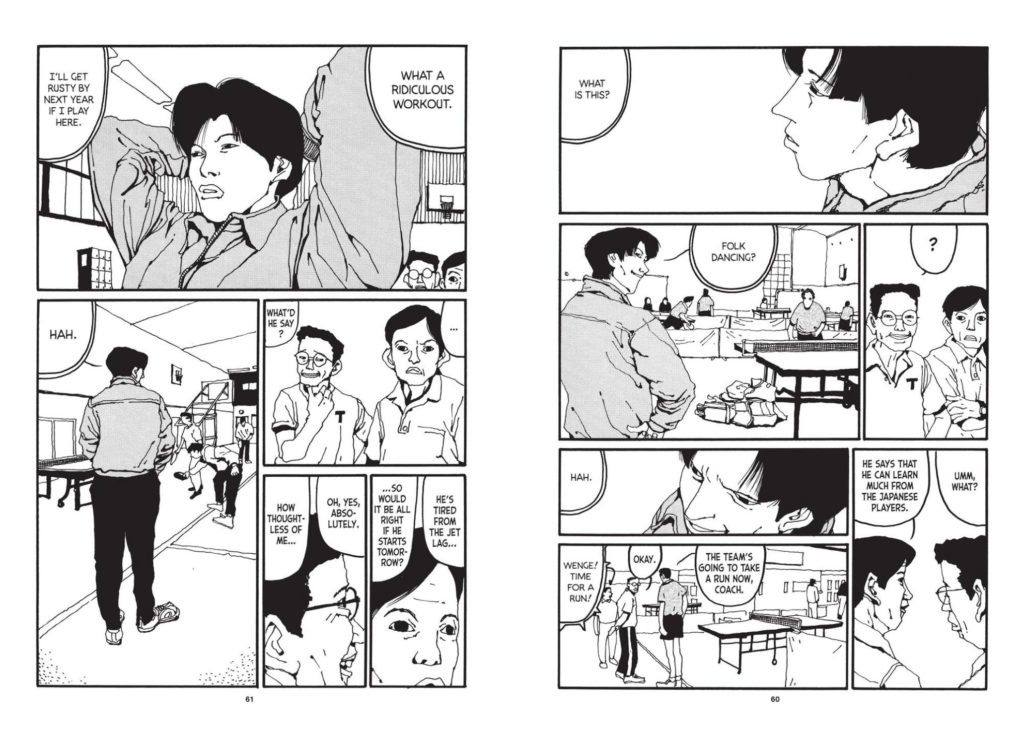
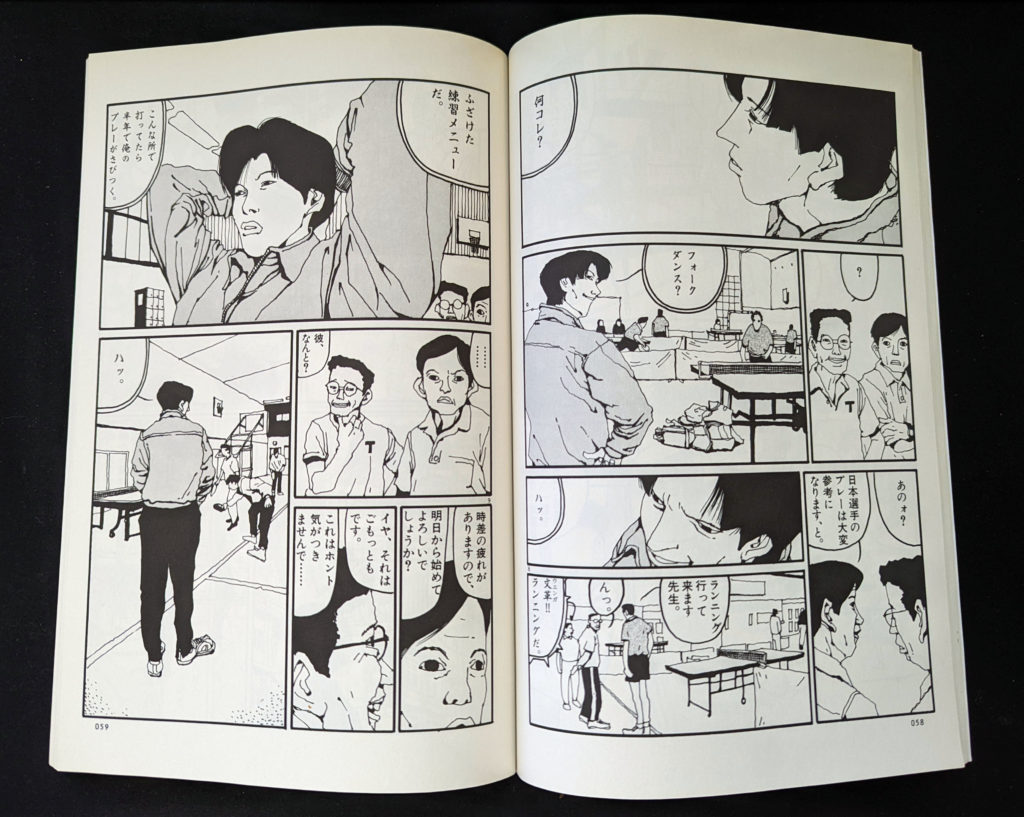
49:25 Jocelyne mentions that manga-ka Akino Kondoh’s work is hand-lettered in her own hand writing, as an ‘indy’ creator.
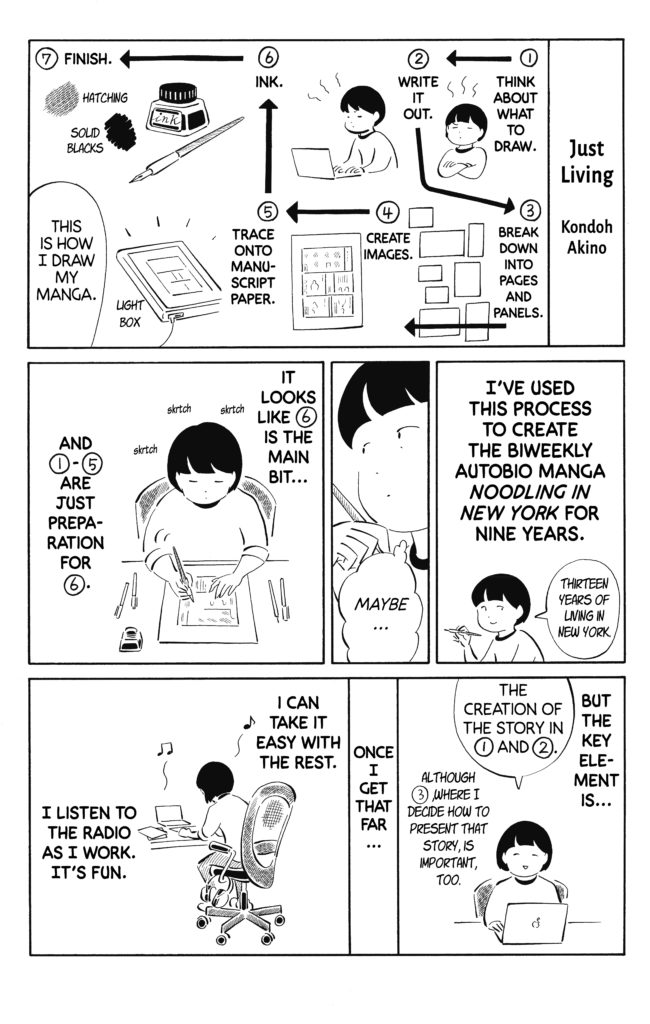
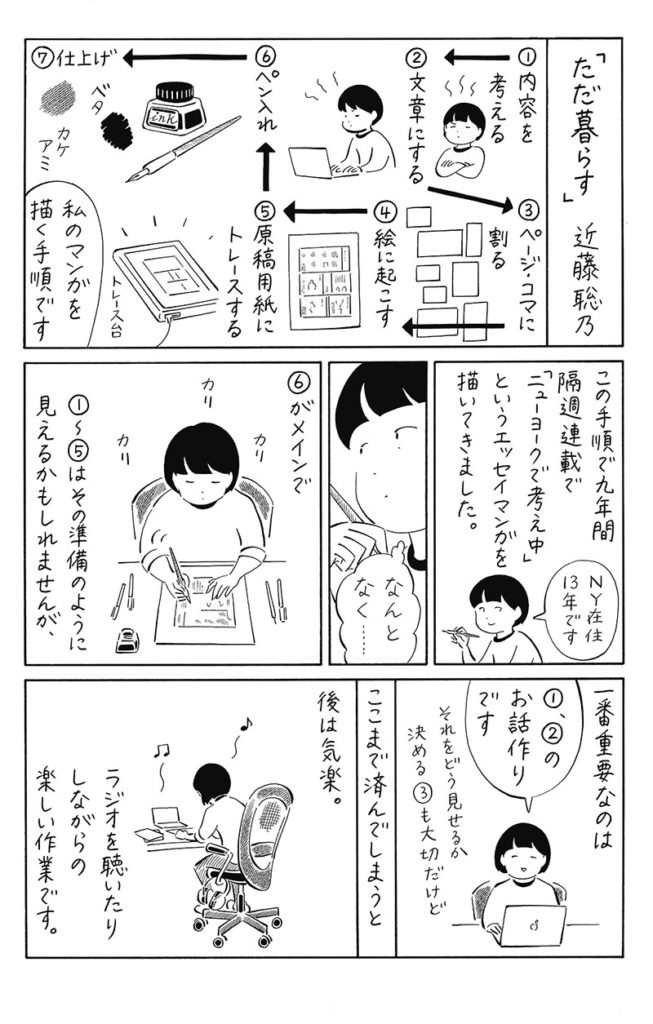
Here’s a side-by-side showing my lettering on Kondoh-san’s work and the original. For something like this, a lot of changes had to be made. Mostly due to Kondoh tending to letter vertically in tight spaces, which doesn’t really suit western typography. I did my best, and I think some of it is okay! But it’s very different than the example you see from Ping Pong above.
52:25 The Fantagraphics edition did have another massive round of edits, with Eric Reynolds, Kayla E, Andrew, and myself all contributing even more corrections to the book as well as to the new material like the essay, interview, and maps. Thanks for the extra time, Eric!
55:05 I am, in fact, why it’s 600 pages. 🙂
I firmly believe that certain books should be combined into stand-alone volumes based on who the intended audience is in North America. Some manga (and BD) need to be release in North America as “graphic novels” to break out of the manga release stream, where they are ill-suited to remain. I have more thoughts on this, feel free to hire me to consult for your manga line. 😉
But for this particular book? The idea is, as Jocelyne mentions, that people within Japan only thinks of Okinawa as their own Hawai’i, a vacation destination. People in the West tend to think of Okinawa as “where the war happened” when they think of it at all. I felt that combining the war-era stories with the modern day stories of resistance, of connecting these two ideas and then showing the diversity and texture of the islands and the people made the most sense, and was the best way I could honour this work. It’s a complex work and in this instance, it needed to be this long. I feel pretty good about it!
1:02:00 We decided to make “Body Tree” by Susumu Higa free for everyone to read, you can check it out here.
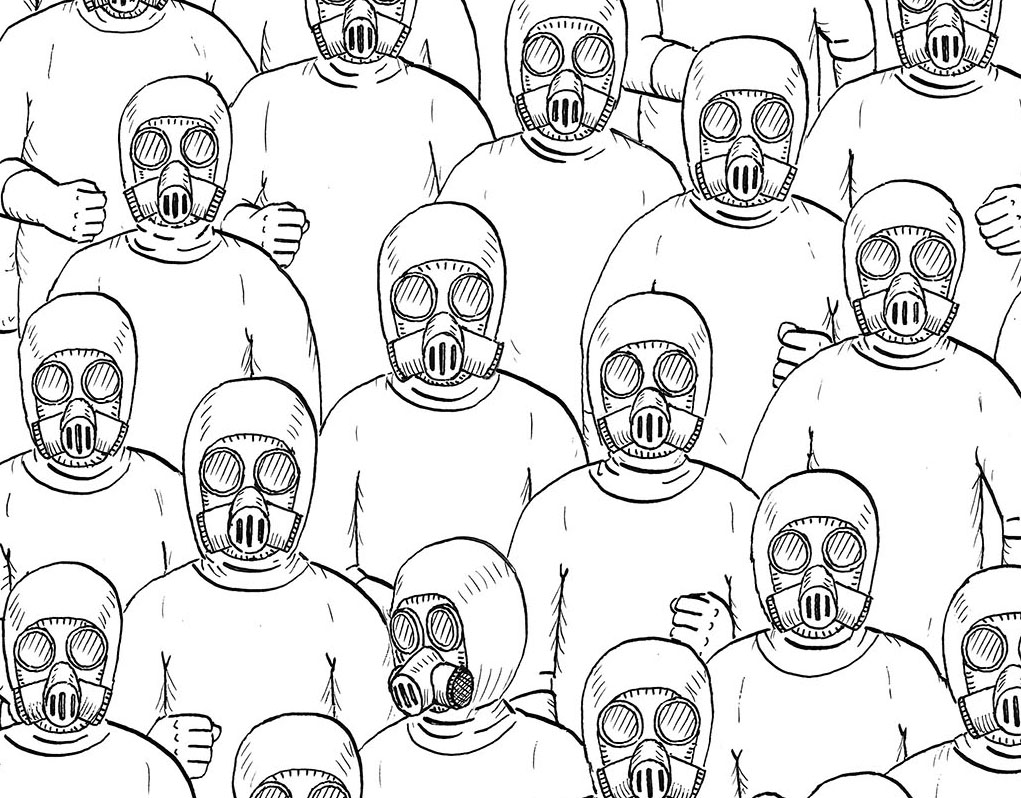
Alright, thanks so much for listening to this episode and for your support of the podcast and of MSX, that made this happen. I hope you’ll check out the book. Thanks so much again to you, the reader, for forgving my blatent plug:

Buy Okinawa now:
Fantagraphics | The Beguiling | Amazon | Barnes and Noble | Waterstones
1:03:35: THE BREAK
SHOUT OUTS
JOCELYNE shouts out the one volume manga Cocoon by Kyo Machiko. She actually wrote a lengthy essay about this book over at her website Brain Vs. Book.
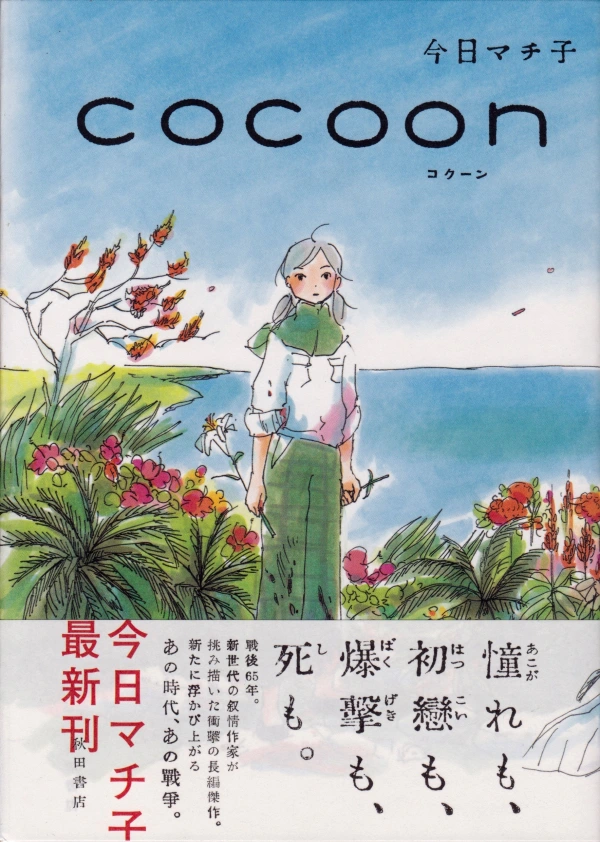
JOCELYNE also shouts-out the television series What Did You Eat Yesterday, based on the manga series by Fumi Yoshinaga. I generally hate live-action adaptations of manga, so it’s nice to get a recommendation. I should be able to watch this, I’ll check it out.
CHIP recommends the Sex and the City Sequel Series, “…and Just Like That.”
ANDREW recommends soccer manga Blue Lock by Muneyuki Kaneshiro and Yusuke Nomura. He said it was exciting and got him interested in a subject he normally doesn’t care about!
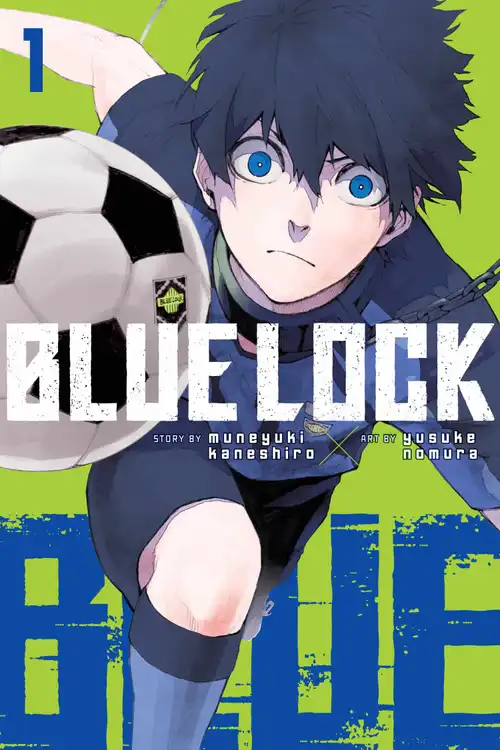
DAVID recommends the Koyaanisqatsi, the 1982 non narrative documentary film. I’ve never seen it either, I’ll give it a shot.
And Chip lets us know that he actually wrote his run on Howard the Duck to the soundtrack of that film, by Mr. Phillip Glass, and that’s pretty neat too. You can listen to that here on YouTube Music.
And that’s this week in Mangasplaining! This episode is also available wherever you get your podcasts, so please subscribe and leave a review, so others can discover our show.
Also, if you’d like to get the latest episode delivered straight to your inbox along with exclusive interviews, articles and new chapters of manga you can’t read anywhere else, subscribe to our Substack newsletter. See what you’re missing at Mangasplaining Extra! Two new manga series start next week!
Next week on Mangasplaining:
Get ready for our episode on Takehiko Inoue’s REAL vol 13, which will also have a fun little bonus feature. 🙂
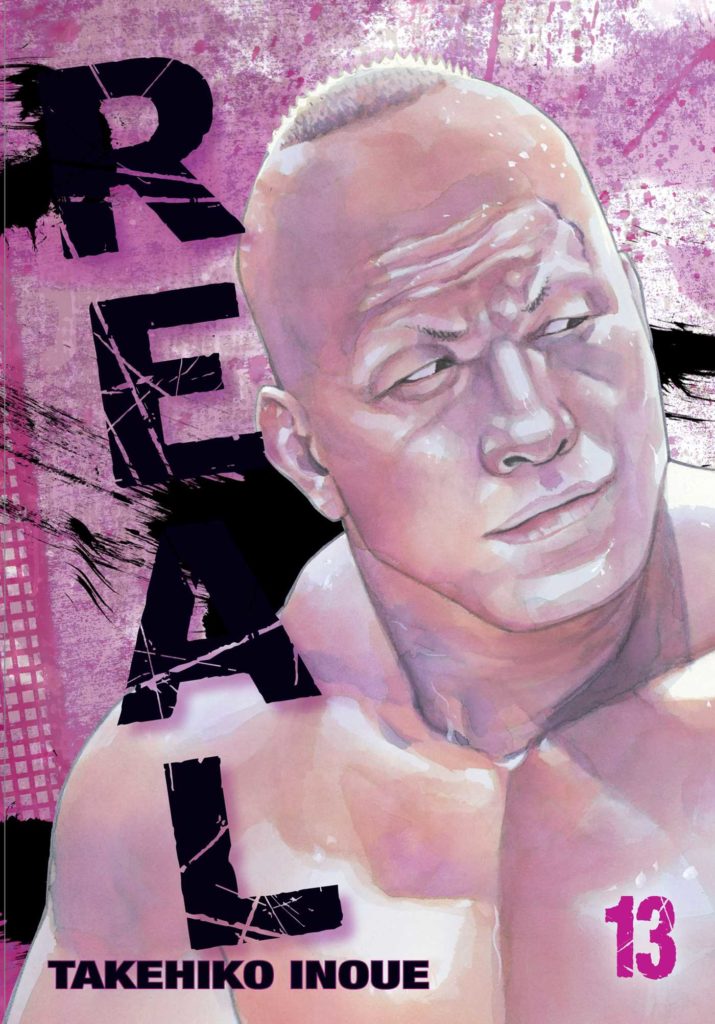
Thanks so much for listening! Please support your local comic and manga specialty shop when purchasing these books, and you can find one near you at comicshoplocator.com. You can also check your local library for print and digital lending options, they have TONS of manga! Finally, thanks to D.A.D.S. for their musical accompaniment for this episode.
